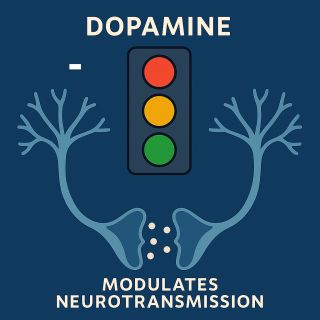Mindfulness & Mental Health
11 Stoic Instructions for Living Well: The Proven Guide
Most of us want a calmer mind, better decisions, and relationships that don’t fall apart under stress. Stoicism offers clear, practical instructions to get there. At its core, these Stoic instructions for living say: focus on your character, not your chaos—because when you shape your inner life, the outer one becomes easier to navigate.
In 40 seconds: Stoics teach that a good life rests on virtue (wisdom, courage, justice, self-control), not on money, likes, or luck. When you direct your energy toward what you can control—your mindset, actions, and values—you reduce anxiety, respond better to setbacks, and build a happiness that cannot be taken away.
The Modern Problem: Busy, Successful, and Still Restless
You can be productive, connected, even admired—and still feel scattered, reactive, and emotionally exhausted.
Common signs:
- You replay conversations and imagine better comebacks.
- You doom-scroll bad news, feeling powerless yet addicted.
- You depend on external wins (promotions, validation, purchases) to feel "enough."
Recent well-being reports show rising anxiety and burnout despite more self-help content than ever. The gap isn’t information. It’s integration.
Key insight: Without an internal framework, every notification, opinion, or setback can hijack your mood.
Why Conventional Self-Help Keeps Failing You
A lot of modern advice pushes hacks: morning routines, productivity stacks, vague "positive vibes." These help briefly—but collapse when:
- Someone criticizes you.
- A project fails.
- Life delivers grief, illness, or uncertainty.
Short-term fixes don’t answer the deeper question: "What kind of person am I becoming?" Stoicism does. It’s not about suppressing emotions or being cold; it’s about building stable inner strength so emotions don’t run your life.
The Stoic Root Cause: Confusing Control, Value, and Reality
Stoic thinkers noticed we suffer most when we:
- Chase what we can’t fully control (status, outcomes, others’ behavior).
- Mislabel externals (success, wealth, approval) as the source of our worth.
- React before we reflect.
Modern psychologists echo this: misaligned expectations and lack of cognitive control fuel stress and rumination (Harvard, 2024). Stoic instructions for living align closely with evidence-based practices like cognitive reframing and values-based action used in therapy.
The Stoic Solution Framework (2025 Edition)
At the heart of Stoicism is a simple, demanding framework:
- Clarify what’s in your control. Your judgments, choices, and efforts.
- Live by virtues. Wisdom, courage, justice, and temperance guide decisions.
- Accept reality without resignation. See things clearly, then act constructively.
- Treat yourself as a lifelong student. Progress over perfection.
The 11 Stoic instructions below reshape this ancient wisdom into modern, actionable steps for calm, resilient, meaningful living.
1. Know Yourself Like It’s Your Job
Featured answer (snippet-ready):
To live well in a chaotic world, start with radical self-knowledge. Notice your patterns, triggers, values, and strengths. When you understand how you think and react, you can respond with intention instead of impulse—this is the foundation of all Stoic instructions for living.
- Spend 5 minutes nightly answering: "What drove my decisions today—ego, fear, or values?"
- List 3 strengths you can use more wisely and 3 weaknesses you must manage.
- Ask one trusted person: "What’s one pattern you see holding me back?"
Why it matters: Without self-awareness, every improvement is guesswork.
2. Calm Anger and Fear by Owning Only What’s Yours
Anger and fear explode when we try to control what isn’t ours: other people’s choices, opinions, or fate.
Key distinction:
- In your control: beliefs, efforts, responses, standards.
- Not in your control: outcomes, others’ reactions, the past, randomness.
Try this Stoic micro-practice:
- When upset, label the event: "Outside my control."
- Ask: "What is the smallest wise action I can take next?"
- Release the rest—not with apathy, but with discipline.
Result: Less spiraling, more grounded action.
3. Become a Collector of Virtues (Not Achievements)
Instead of hoarding followers, titles, or purchases, commit to accumulating virtue:
- Wisdom: seeing clearly.
- Courage: acting despite fear.
- Justice: treating others fairly.
- Temperance: choosing balance over excess.
Unlike money or status, your character cannot be taken by market crashes, gossip, or algorithms. Choosing virtue in 2025 might look like:
- Returning excess change instead of "getting lucky."
- Admitting a mistake at work before it’s discovered.
- Saying no to a lucrative but unethical project.
Virtue is the one asset that compounds quietly and serves everyone it touches.
4. Practice Stoic Compassion: Ignorance, Not Evil
Stoicism doesn’t excuse harm, but it reframes it: most hurtful behavior comes from confusion, fear, or ignorance—not pure malice.
Use this in tense moments:
- Replace "They’re awful" with "They’re mistaken" or "They’re driven by fear."
- Set boundaries firmly, without cruelty.
- Remember you’ve also acted poorly when you "didn’t know better."
Modern example: When a colleague undermines you publicly, respond with clarity and evidence—not revenge. Correct the issue, protect your work, but don’t let their behavior recruit you into pettiness.
5. Remember: You Are Part of Something Bigger
You’re not an isolated unit. You belong to circles: family, friends, teams, communities, humanity.
Applying Stoic instructions for living means:
- Ask daily: "How can I contribute, even in a small way, today?"
- Share knowledge, mentor someone, or help a neighbor without broadcasting it.
- Make decisions with "we" in mind, not just "me."
Contribution creates meaning. People who act beyond themselves report greater resilience and life satisfaction (Stanford researchers, 2024).
6. Make Peace with Mortality (And Live Better Now)
A core Stoic move: remember you are mortal—without spiraling.
This doesn’t mean obsessing over death. It means:
- Not postponing important conversations.
- Not wasting days on trivial feuds or endless comparison.
- Choosing depth over distraction.
Quick exercise:
- Ask: "If this week were my last normal week, what would I stop doing? What would I finally start?" Then act on one answer.
Accepting limits intensifies gratitude and focus.
7. Use Wisdom as Your Self-Improvement Filter
Featured answer (snippet-ready):
In Stoic philosophy, wisdom is the skill of knowing what truly matters. It sorts life into what is good (virtue), bad (vice), and neutral (everything else), so you stop overvaluing status and undervaluing character. This filter prevents noisy goals from hijacking your life.
Apply the wisdom filter:
- Before a decision, ask: "Does this strengthen or weaken my character?"
- When chasing a goal, define both: "What I want" and "Who I refuse to become to get it."
- Treat setbacks as information, not identity.
8. Build Happiness No One Can Take Away
If your happiness hangs on a salary, a relationship, or public opinion, it will always feel fragile.
Stoic instructions for living well redirect you toward:
- Integrity over image.
- Effort over outcome.
- Self-respect over external applause.
Examples in practice:
- You might lose a client but keep your standards.
- You might end a relationship but preserve your honesty.
Real happiness is the quiet confidence that you acted in line with your values—even when it cost you.
9. Refuse Meanness: Choose Strength Over Cruelty
The Stoics viewed cruelty, dishonesty, and malice as true failures—not illness, not poverty, not discomfort.
In daily life, this means:
- No satisfaction in humiliating others online.
- No gossip that dehumanizes.
- No "I’m just being honest" as a cover for attacks.
Kindness here is not weakness. It is controlled power: choosing not to harm when you easily could.
10. Become a Relentless Student of Your Own Life
Treat every day as a class in being human.
Nightly Stoic review (3 minutes):
- What did I do well today that honored my values?
- Where did I fall short—impatience, ego, distraction?
- What is one small adjustment for tomorrow?
Rules:
- Be strict with your standards.
- Be gentle with your self-talk.
This mindset turns mistakes into curriculum instead of evidence that you’re broken.
11. Practice Serious Self-Care (Not Just Self-Soothing)
Self-care in Stoic terms isn’t indulgence; it’s maintaining the instrument through which you serve life.
Foundations:
- Sleep like it’s non-negotiable.
- Move your body regularly.
- Protect focus: limit mindless scrolling, curate your inputs.
- Seek help (therapy, coaching, community) when you’re stuck.
Self-respect and self-care are prerequisites for contribution, not competitors to it.
People Also Ask: Quick Stoic Answers
What are Stoic instructions for living in simple terms?
Stoic instructions for living are practical guidelines focused on controlling your responses, acting with virtue, accepting what you can’t control, and contributing to others. They help you stay grounded, ethical, and calm—especially when life is uncertain or unfair.
Is Stoicism about suppressing emotions?
No. Stoicism is about understanding emotions, then choosing your response. It aims to prevent destructive reactions—not to eliminate healthy feelings like love, gratitude, or appropriate sadness.
How do I start applying Stoicism today?
Begin with three basics:
- Pause before reacting.
- Separate what you can and cannot control.
- Ask, "What would the wiser version of me do next?"
Tiny consistent steps beat dramatic one-off changes.
Can Stoicism work in a modern, digital, high-pressure life?
Yes—this is where it shines. The Stoic focus on attention, values, and inner stability directly counters notification overload, comparison culture, and uncertainty at work.
Step-by-Step: Implementing These 11 Instructions
Weeks 1–2: Awareness & Control
- Journal briefly each night (Instruction 1).
- Practice the control test when stressed (Instruction 2).
Weeks 3–4: Virtue & Relationships
- Choose one virtue per week to practice intentionally (3).
- Respond to one difficult person with Stoic compassion (4).
- Do one small act for your community (5).
Weeks 5–6: Depth & Resilience
- Reflect once a week on mortality and priorities (6).
- Run big decisions through the wisdom filter (7).
- Redefine happiness as self-respect and alignment (8).
Weeks 7–8: Refinement & Sustainability
- Audit your language and behavior for meanness (9).
- Keep a nightly “Stoic scoreboard” (10).
- Lock in 3 non-negotiable self-care habits (11).
This phased approach keeps the philosophy mobile-friendly and life-friendly: short practices, repeatable daily.
Expected Results: What Changes and When
If you practice consistently, you can expect:
- In 7 days: Slight distance from irritations, more pauses before reacting.
- In 30 days: Clearer priorities, less emotional whiplash from news or opinions.
- In 90 days: Stronger boundaries, calmer confidence, higher respect for yourself.
- In 1 year: A durable inner framework—success feels richer, setbacks feel survivable.
Not every day will be elegant. But over time, you’ll notice a distinct upgrade: less drama, more depth.
Troubleshooting: When Stoicism Feels Hard or Confusing
If you feel:
- "I’m becoming too detached": Recheck Instructions 4 and 5. Stoicism includes empathy and contribution.
- "I still feel anxious": Focus more on Instruction 2 (control) and seek professional support when needed; Stoicism complements, not replaces, mental health care.
- "I keep failing my own standards": Use Instruction 10. You’re a student, not a finished product.
Remember: The goal is not to be perfectly Stoic. It’s to be slightly wiser, kinder, and braver than yesterday.





